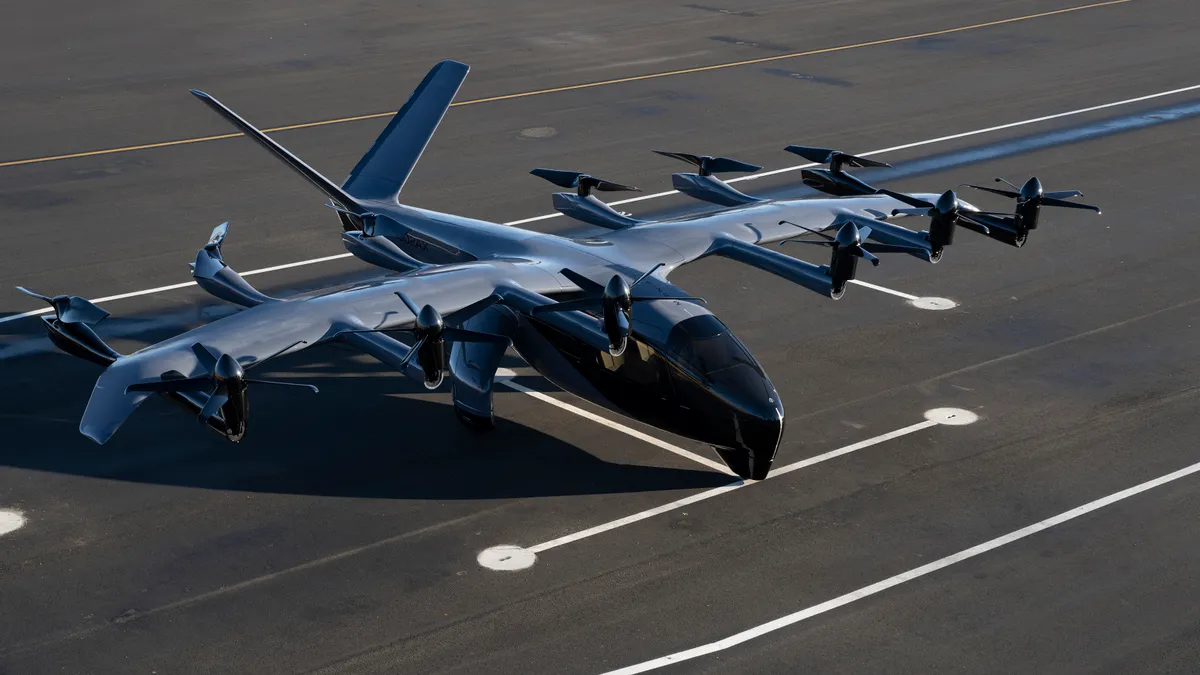Air taxis may begin operating in Chicago, New York City and San Francisco in the coming years. Using electrically powered aircraft that can take off and land vertically, known as eVTOLs, they promise a new era of urban air mobility, flying between downtown areas and airports or acting as regional transportation.
The Federal Aviation Administration recently published its implementation plan for advanced air mobility, which former FAA acting administrator Billy Nolen spearheaded while he led the agency. A self-confessed “Trekkie,” or Star Trek fan, Nolen has had a career that included flying for the U.S. Army and 26 years with American Airlines as a pilot and in safety roles.

In June Nolen joined eVTOL developer Archer Aviation as chief safety officer. He described his role as helping to bring the company’s first commercial aircraft to market “certifiably safe, sustainable, accessible and eco-friendly.” Smart Cities Dive spoke with Nolen about the role cities will play in this new, rapidly advancing technology, how eVTOLs will serve the public and what the future of urban air mobility looks like.
Editor’s note: This interview has been edited for length and clarity.
SMART CITIES DIVE: Air taxi developers are progressing quickly toward commercial flights starting as soon as 2025. What is your outlook on the industry?
BILLY NOLEN: The world is hungry for the technology. There are different use cases: from the airport into city centers, intracity, between cities, fire rescue. We're talking about having a really good deal of scale by 2030, and by 2035, you're talking about a mature industry here with literally thousands or tens of thousands of eVTOLs on a global basis. So it comports well to the thinking around smart cities, around connectivity, giving people access and the freedom to move about in different ways. And I think that's something that bodes well for the future.
What role will cities play, and how might they benefit from this new transportation mode?
There's a role for municipalities to play in terms of building out part of the infrastructure, the vertiports, so that all of this comes together. We're working in close coordination with cities on every step in building out that necessary infrastructure.
We have lots of communities that are no longer connected, where there's been a loss of regional air service. That ability to contribute to decongesting our busiest cities, and then that level of connectivity, is what excites me about it.
But what will it cost to fly? Will these air taxis just be for the rich?
We know that, were we to come to market and be seen as the purview of the rich, it would immediately be seen as, “Oh gosh, really, don’t we have enough helicopters already?” This is really meant to be a platform that is accessible to the general public. You're talking about something on the order, in the initial days, maybe around an Uber Black price, but as we get to scale, you're going to see those prices continue to drop.
Could other transportation modes benefit from eVTOL operations?
Today we sort of separate surface transportation and air transportation. Now, as we think of electrification and charging, the president has laid out an ambitious plan for charging stations across the country. Let's integrate that so it can also be the charging for advanced air mobility as it comes out of its nascent stage and really starts to move into scale because you're tapping into the same infrastructure piece.
The Federal Aviation Administration just released its implementation plan for advanced air mobility. You worked on that during your time at the FAA. From an industry perspective, how did they do?
We applaud the FAA and the Department of Transportation, but, overarchingly, we applaud the president and the administration for setting out an implementation plan that encompasses a whole-of-government approach in terms of how we enable the future.
We know that for this new industry to be successful, it has to be safe, sustainable and environmentally friendly. When you've got a clear road map for how to get there, you know all the milestones you need to hit.
How do you see the big picture for air mobility?
This is our version of the moonshot. The interest and hunger for the growth of this industry is just off the chart. And I can tell you, as I've traveled the world, there's lots of excitement about getting this done. What the public is looking for are assurances from the regulator that yes, this is new technology, this is novel technology, but we have the advantage of all the advances in technology that have come before.











